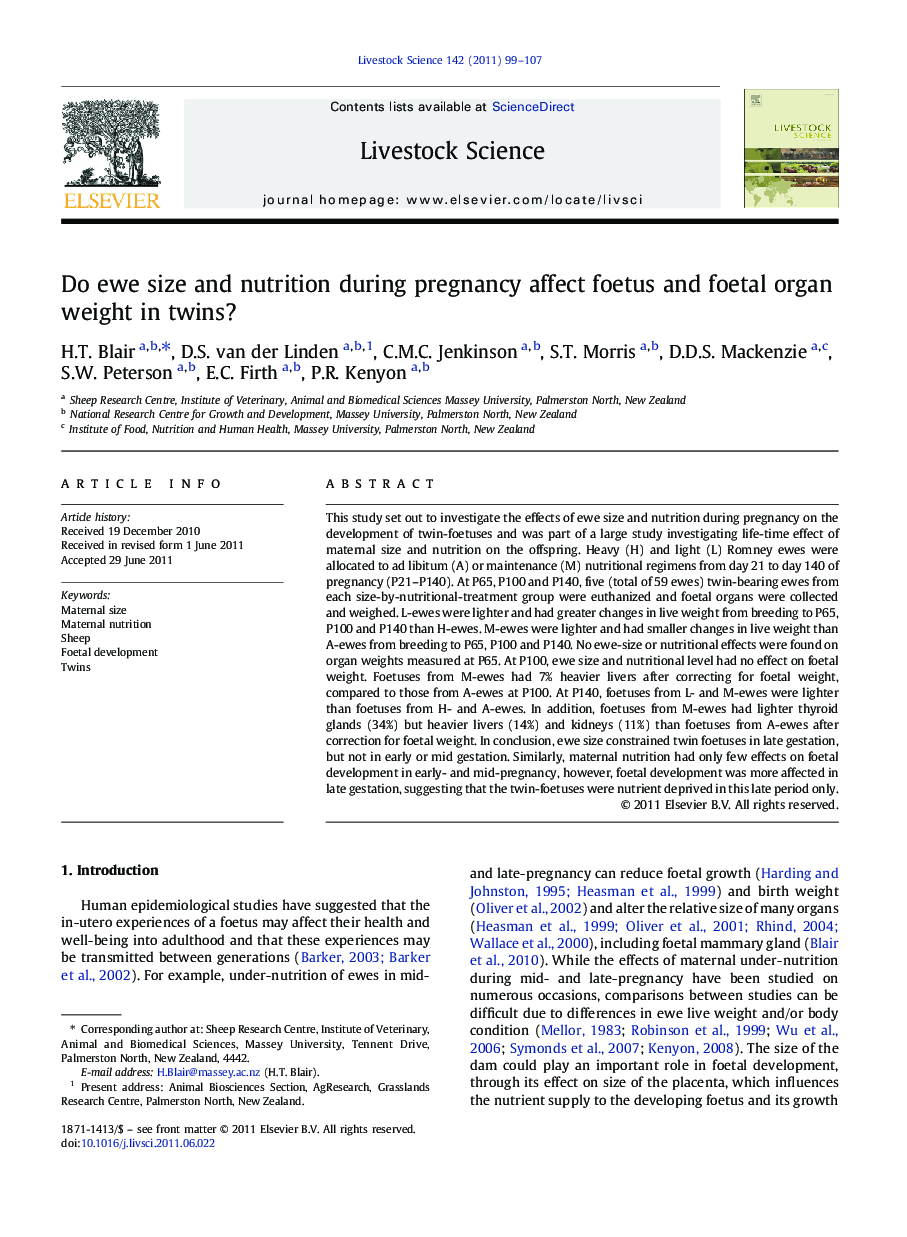| Article ID | Journal | Published Year | Pages | File Type |
|---|---|---|---|---|
| 5790743 | Livestock Science | 2011 | 9 Pages |
Abstract
This study set out to investigate the effects of ewe size and nutrition during pregnancy on the development of twin-foetuses and was part of a large study investigating life-time effect of maternal size and nutrition on the offspring. Heavy (H) and light (L) Romney ewes were allocated to ad libitum (A) or maintenance (M) nutritional regimens from day 21 to day 140 of pregnancy (P21-P140). At P65, P100 and P140, five (total of 59 ewes) twin-bearing ewes from each size-by-nutritional-treatment group were euthanized and foetal organs were collected and weighed. L-ewes were lighter and had greater changes in live weight from breeding to P65, P100 and P140 than H-ewes. M-ewes were lighter and had smaller changes in live weight than A-ewes from breeding to P65, P100 and P140. No ewe-size or nutritional effects were found on organ weights measured at P65. At P100, ewe size and nutritional level had no effect on foetal weight. Foetuses from M-ewes had 7% heavier livers after correcting for foetal weight, compared to those from A-ewes at P100. At P140, foetuses from L- and M-ewes were lighter than foetuses from H- and A-ewes. In addition, foetuses from M-ewes had lighter thyroid glands (34%) but heavier livers (14%) and kidneys (11%) than foetuses from A-ewes after correction for foetal weight. In conclusion, ewe size constrained twin foetuses in late gestation, but not in early or mid gestation. Similarly, maternal nutrition had only few effects on foetal development in early- and mid-pregnancy, however, foetal development was more affected in late gestation, suggesting that the twin-foetuses were nutrient deprived in this late period only.
Related Topics
Life Sciences
Agricultural and Biological Sciences
Animal Science and Zoology
Authors
H.T. Blair, D.S. van der Linden, C.M.C. Jenkinson, S.T. Morris, D.D.S. Mackenzie, S.W. Peterson, E.C. Firth, P.R. Kenyon,
